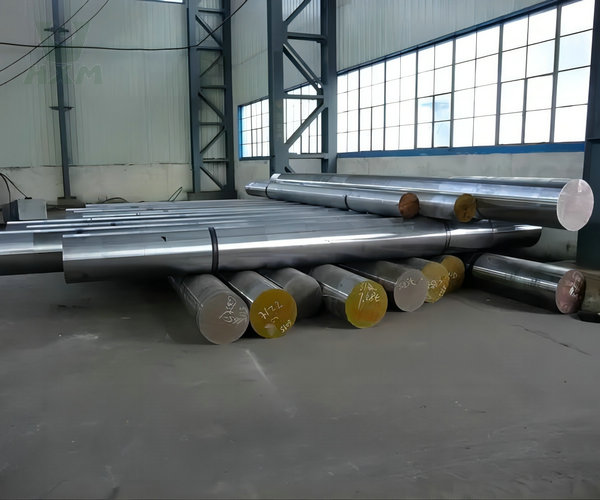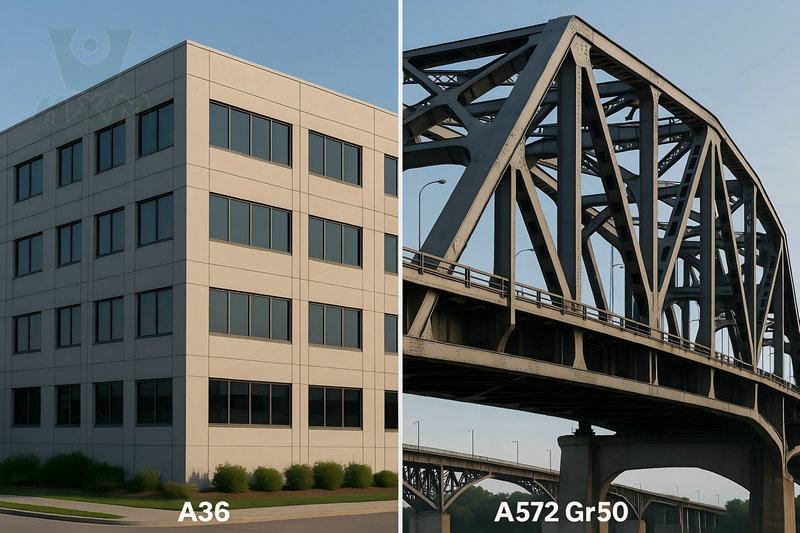From wrapping kitchen leftovers to insulating spacecraft, aluminum foil is one of the most versatile materials in modern society. We use aluminum foil almost every day, but have you ever wondered, “How Thick is Aluminum Foil?”
The answer is more complicated than you might think and depends entirely on what it’s used for. The aluminum foil in your kitchen drawer is very different from the aluminum foil used in industrial packaging or construction.
In this guide, we’ll demystify aluminum foil thickness and break it down into clear, easy-to-understand terms. We’ll cover all the specifications from standard household aluminum foil to specialized industrial-grade aluminum foil, so you know exactly what you’re using.
What is Aluminum Foil?
Aluminum foil is a thin sheet made of pure aluminum, which has the characteristics of light weight, softness, and good thermal conductivity. Their thickness ranges from a few micrometers to tens of micrometers, depending on the application and desired function.
Understanding Aluminum Foil Thickness Application
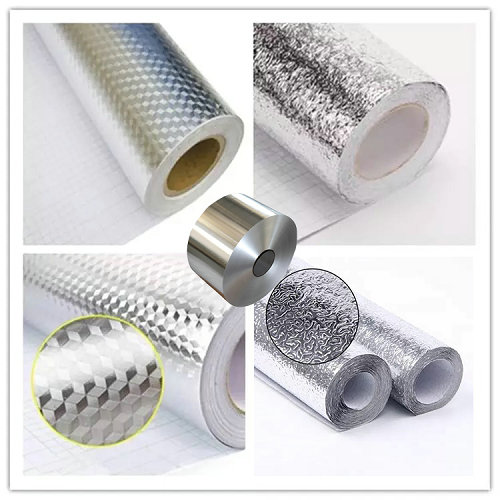
Ultra-thin aluminum foil (several microns to tens of microns):
Ultra-thin aluminum foil is mainly used in the electronics industry, such as integrated circuit packaging, capacitors, batteries, etc. Its extremely thin thickness makes it easy to wrap and protect tiny electronic components and provides good electrical conductivity and thermal insulation properties.
Medium-thickness aluminum foil (tens of microns to hundreds of microns):
Medium-thickness aluminum foil is commonly found in the food packaging industry. For example, common household tinfoil is made from medium-thick aluminum foil. Aluminum foil plays the role of moisture-proof, oxygen-blocking, fresh-keeping, and heat-insulating in food packaging, and at the same time, it can prevent the mixing and loss of flavor.
Thick aluminum foil (above hundreds of microns):
Thick aluminum foil is commonly used in industrial fields. It has high strength and corrosion resistance and is suitable for fields such as aviation, spaceflight, construction, and automobiles. In these fields, thick aluminum foil is used for thermal insulation, sound insulation, fire protection, and structural support.
Standard Aluminum Foil Thickness
The standard thickness of aluminum foil typically ranges from 0.016 mm (0.0006 inches) to 0.2 mm (0.0079 inches). However, it’s important to note that aluminum foil is available in various thicknesses, and the specific thickness can vary depending on the intended application.
For household use, the most commonly found aluminum foil thickness is around 0.016 mm to 0.025 mm (0.0006 to 0.001 inches). This thickness is suitable for everyday tasks like wrapping food, covering dishes, and lining baking sheets.
In industrial and commercial applications, thicker aluminum foils are often used. These can range from 0.03 mm to 0.2 mm (0.0012 to 0.0079 inches) or even higher. Thicker foils provide increased durability, strength, and barrier properties, making them suitable for insulation, packaging, and other specialized applications.
It’s worth mentioning that these thicknesses are general standards, and variations can exist based on specific requirements and regional practices. Manufacturers may also produce aluminum foil with custom thicknesses to meet the specific needs of customers and industries.
Overall, aluminum foil’s versatility and customizable thickness make it a widely used material in various sectors, including household, food packaging, pharmaceuticals, electronics, and more.
Measuring Aluminum Foil Thickness
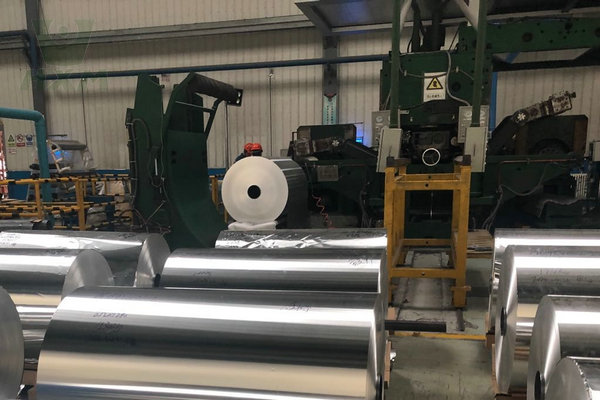
Measuring the thickness of aluminum foil can be done using a few different methods. Here are a couple of commonly used techniques:
Micrometer Measurement:
One way to measure aluminum foil thickness is by using a micrometer, which is a precise measuring instrument. Follow these steps:
- Ensure that the micrometer is clean and calibrated.
- Take a piece of aluminum foil and flatten it out as much as possible.
- Place the foil between the measuring jaws of the micrometer.
- Gently close the jaws until they are lightly touching the foil.
- Read the measurement displayed on the micrometer. This will give you the thickness of the aluminum foil in millimeters or inches.
Weighing Method:
Another method to estimate the thickness of the aluminum foil is by weighing a known area of the foil and calculating its thickness based on the density of aluminum. Here’s how to do it:
- Cut a rectangular piece of aluminum foil with a known area, for example, 10 cm by 10 cm.
- Weigh the foil using a precise scale.
- Divide the weight by the area to get the weight per unit area (grams per square centimeter).
- Use the density of aluminum (2.7 grams per cubic centimeter) to calculate the thickness. Divide the weight per unit area by the density to obtain the thickness in centimeters or inches.
It’s important to note that these methods provide approximate measurements, as the thickness of aluminum foil can have slight variations within the same roll or between different rolls. For precise measurements, it is recommended to use specialized equipment like a thickness gauge or consult the specifications provided by the manufacturer.
Not All Foil is Created Equal: A Comparison of Types
The thickness of aluminum foil varies dramatically based on its designated use. Here’s a simple chart comparing the most common types.
| Type of Foil | Typical Thickness Range (Microns / µm) | Typical Thickness Range (mm) | Common Uses |
| Standard Household Foil | 16 – 24 µm | 0.016 – 0.024 mm | Food wrapping, baking, covering containers |
| Heavy-Duty Foil | 25 – 40 µm | 0.025 – 0.040 mm | Grilling, oven bags, heavy-duty food storage, freezer wrap |
| Industrial/Converter Foil | 6 – 200 µm (or more) | 0.006 – 0.200 mm | Pharmaceutical packaging, insulation, electronics, capacitors |
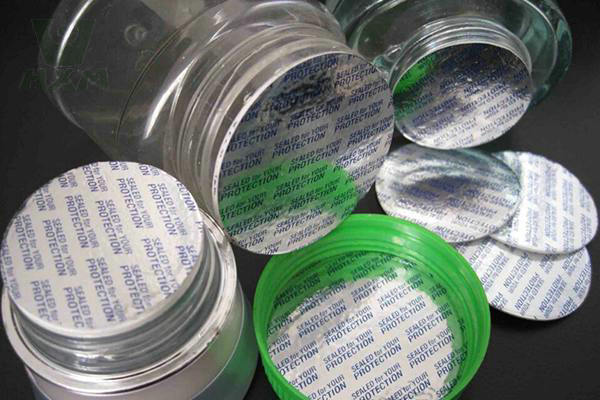

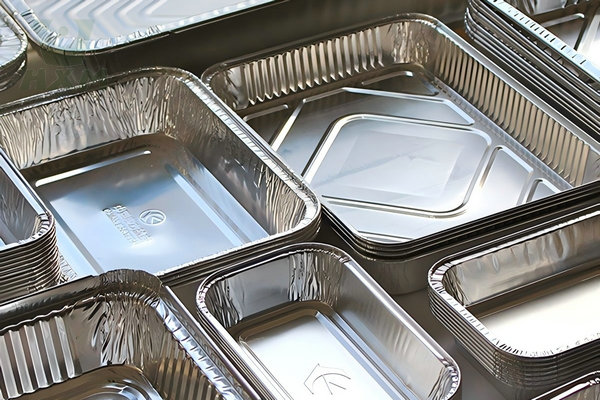
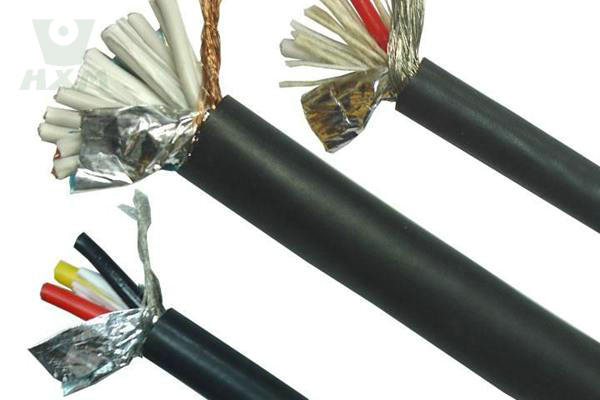
How to Choose the Right Aluminum Foil Thickness?
Choosing the right thickness is a balancing act that requires consideration of three core factors:
Performance: What strength, flexibility, puncture resistance, or barrier properties do you need? This is the primary consideration. In our practice, even a 2-micron difference can result in a dramatic change in the moisture barrier performance of pharmaceutical packaging.
Alloy & Temper: Different aluminum alloys (such as 1235 alloy, 8011 alloys,and 3003 alloys) and temper (hard ‘H’ or soft ‘O’) affect the performance of the foil. For example, soft foil is easier to fold, while hard foil is more rigid.
Cost-Effectiveness: Obviously, thicker foil uses more raw material and costs more. Our experts can help you find the most cost-effective thickness solution while meeting your performance requirements.
Frequently Asked Questions About Aluminum Foil
Let’s dive deeper into some of the most common questions people have about aluminum foil.
Is Thicker (Heavy-Duty) Foil Better?
“Better” depends on the job. Heavy-duty foil is stronger, more durable, and more resistant to tearing. This makes it ideal for tough jobs like grilling, lining oven trays for heavy roasts, or wrapping items for the freezer, as it provides a better barrier against air and freezer burn. For simple tasks like covering a bowl, standard foil is perfectly sufficient and more cost-effective.
What is the best Thickness for Grilling?
We recommend using Heavy-Duty aluminum foil with a minimum thickness of 20 µm. It can better withstand high temperatures and punctures from sharp foods such as bones.
How is Aluminum Foil Thickness Measured?
The thickness of something as thin as foil is measured with highly precise instruments called micrometers or thickness gauges. These tools can measure down to a single micron (one-millionth of a meter) to ensure the foil meets exact specifications for its application.
Why Does Aluminum Foil Have a Shiny Side and a Dull Side?
This is one of the most popular foil questions! The difference is not for cooking purposes but is simply a byproduct of the manufacturing process.
During the final stage of rolling, two layers of foil are passed through the rollers at the same time. The side of each layer that comes into contact with the highly polished steel rollers becomes shiny. The side that is pressed against the other sheet of foil comes out with a matte, or dull, finish. For everyday cooking, it makes no functional difference which side you use.
What is the difference in thickness between 8011 aluminum foil and 1235 aluminum foil?
The thickness itself is customizable and has nothing to do with the alloy model. The difference lies in performance: 8011 alloy contains more elements and is stronger, and is often used in pharmaceutical packaging and container foil; while 1235 alloy is purer and softer, and is often used in tape foil and flexible packaging.
Beyond the Kitchen: The Importance of Metal Thickness in Industry
While aluminum foil is a fascinating material, the principle of “thickness for purpose” is a fundamental concept across the entire metal industry.
In industrial applications, selecting the correct material thickness is not about convenience—it’s about safety, performance, and longevity. Just as a 40-micron foil is needed for a tough grilling job, a 10mm stainless steel plate is required for a high-pressure vessel. The thickness of a metal plate determines its:
Structural Strength and Load-Bearing Capacity
Corrosion Resistance and Durability
Heat Resistance and Thermal Conductivity
Weldability and Formability
At Huaxiao Metal, we specialize in providing industrial-grade metal products where precision is critical. We all understand that the right thickness is critical to the success of a project.
Conclusion: How Thick is Aluminum Foil?
So, how thick is aluminum foil? It ranges from a delicate 16 microns for your kitchen to over 200 microns for demanding industrial jobs.
This simple material serves as a perfect example of how material science tailors a product for a specific need. Understanding thickness is key to unlocking the full potential of any metal.

